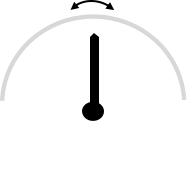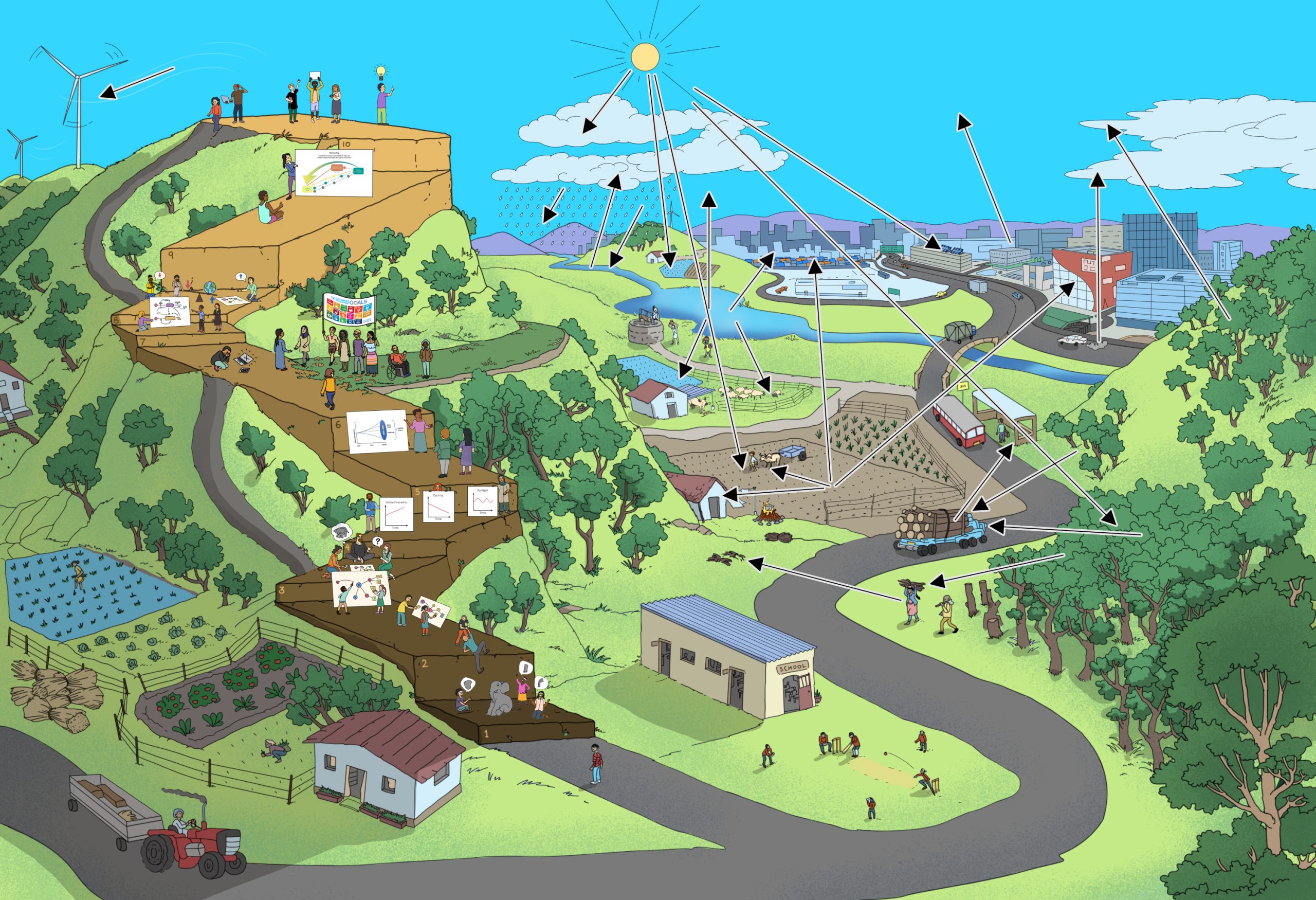Systems thinking is the ability to describe and/ or visualize a part of a complex reality, express that part of reality as a model, understand the model as a system, use the model to explain the behaviour of the system, anticipate the behaviour of the system, and evaluate its impacts on sustainable development, identify potential points of, and types of interventions, generate options to act, assess their impacts in the frame of sustainable development, and decide whether further actions are necessary or not.
What is the aim?
To enable learners to:
- Detect potential interventions to use leverage points,
- Understand that humans continuously intervene in many sub-systems of the global system, and therefore the global system itself,
- Understand that these interventions have been done, and are being done everywhere, knowingly, unknowingly, and often with partial knowledge,
- Understand that systems learning enables individuals or groups to decide and act to change systems, with purpose, and
- Use the knowledge about the points of intervention to change the functioning of systems.
Activities, tasks, and suggested learning methods
Preparatory tasks:
- The working groups set up for Step 7 may continue.
- Explain, using examples, that different directions of change are possible at a leverage point,
- A boat paddle can turn the boat in different directions, depending on how it is used
- the gear stick in the Nikki Lauda video they might have seen in Step 7, to go forward or in the reverse direction
- Learners may then be asked to identify similar examples, such as certain parts of vehicles, tools of different kinds, and the different ways they may be used to change the system behaviour.
Main tasks
- Ask learners to differentiate different directions of change possible at the leverage points they identified in the previous step. Learners should list the actions and consequences in a table, such as the one provided in the worksheet ‘Using the Leverage’.
- Ask learners to visit the webpage titled ‘The Jeans Redesign’ at the Ellen Macarthur Foundation, available https://www.ellenmacarthurfoundation.org/our-work/activities/make-fashion-circular/the-jeans-redesign?utm. They may view the video, discuss the key points made and respond to the questions suggested in the worksheet ‘Sustainable Jeans?’
- Using their discussion outputs from these worksheets, learners may also produce and share a 3-minute podcast with the title: “Options to change the Jeans system”.
The tasks in this Step may be supported by learning methods such as:
Suggested Further Leading Questions
- Can we change the Jeans system towards more sustainable outcomes?
- Is there a possibility to change a system in an intended direction of sustainable development? If yes, how may this be done?
Example
Using the Leverage
 |
||
| Action/ Consequences | Leverage point | Action/ Consequences |
| ● Increase the acreage of farmland under cotton | Land resources used for cotton cultivation | ● Control the acreage of farmland under cotton |
| ● Conventional mines | Source of metal for zips
(Using metal from mines or sourcing recycled metals) |
● Recycled metal |
| ● Business as usual | Soil degradation/ management | ● Sustainable soil management techniques adopted |
| ● New designs appear frequently promoting conventionally manufactured jeans with conventional input materials | Desire for jeans
“Ethical jeans” (e.g. made from organic cotton and recycled metal) or “regular jeans” or even a preference for unbranded plain cotton trousers) |
● Designs and brands appear promoting organic cotton, recycled metal, fair trade |
| ● | ● | |

